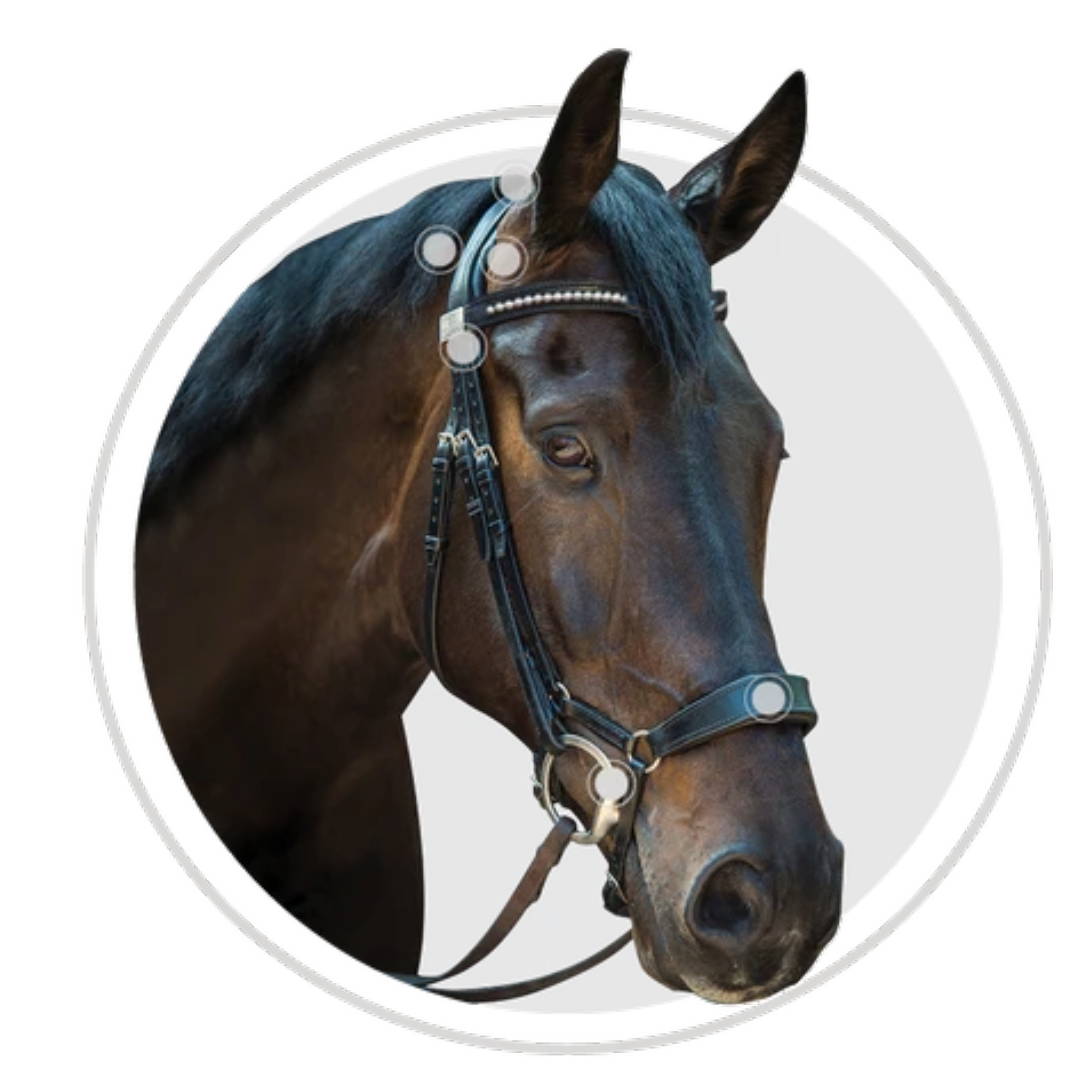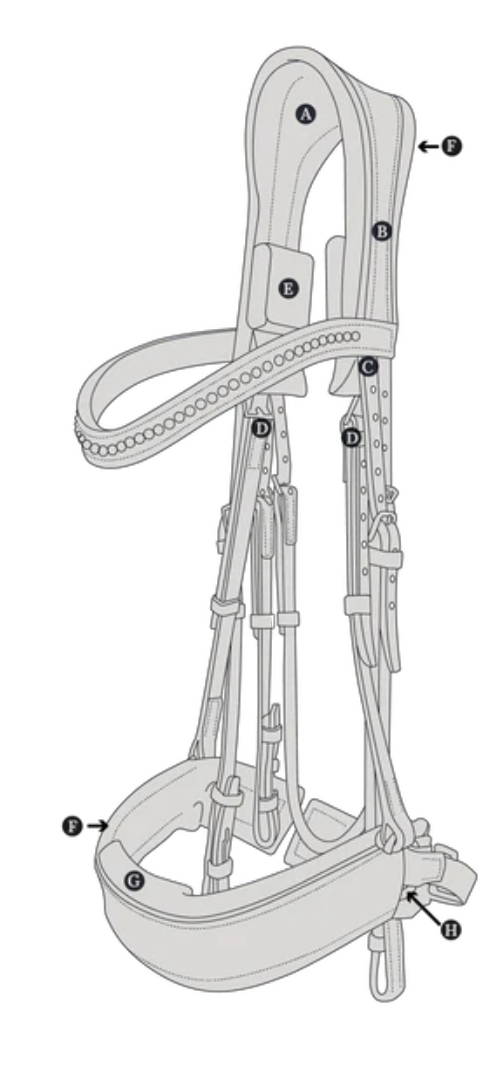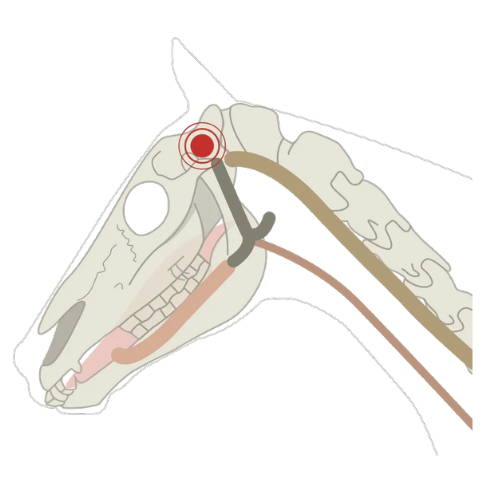2.
Bridle pressure is not constant, it is influenced by factors such as ground reaction force when landing over a fence or taking a stride, or by a natural reflex such as swallowing.
3.
Stability enhances comfort. The horse’s performance deteriorates the more movement there is around the crown of the head. So, the answer to bridle pressure is not a loose or baggy bridle. The answer is a bridle that remains consistently stable against the head and moves with the horse, not against him.
4.
Articulation points on the bridle design allow the components to move independently and in harmony with the horse’s movement, instead of being rigid, so pressure is effectively reduced.
5.
Most bridles exert hardly any poll pressure. Pressure is higher each side of the poll, behind the ears and under the browband.
6.
Gait analysis proves a significant decrease in knee flexion when there is asymmetry around the horse’s head – for example if buckles are on one side only or competition numbers are one side in the line of vision.



